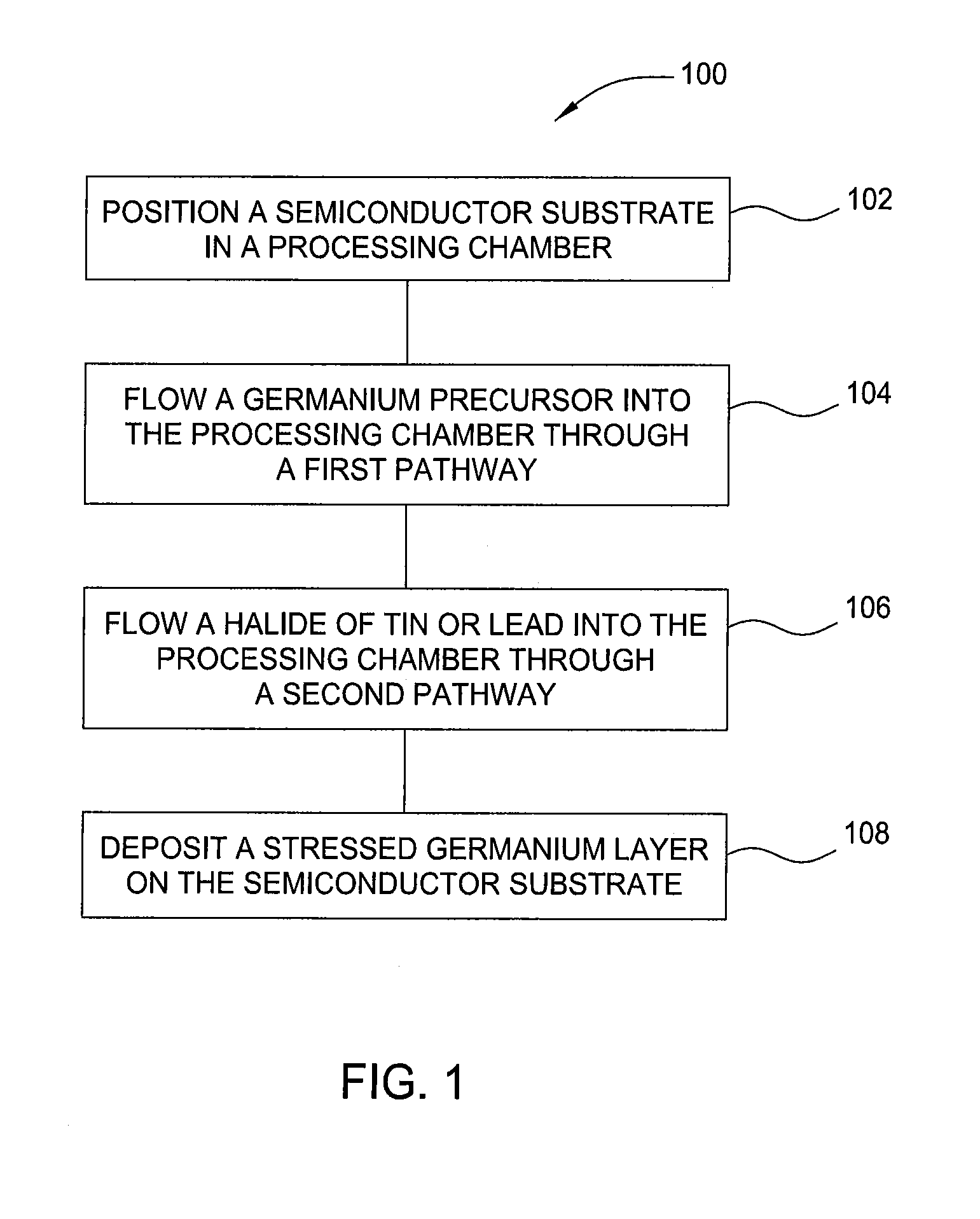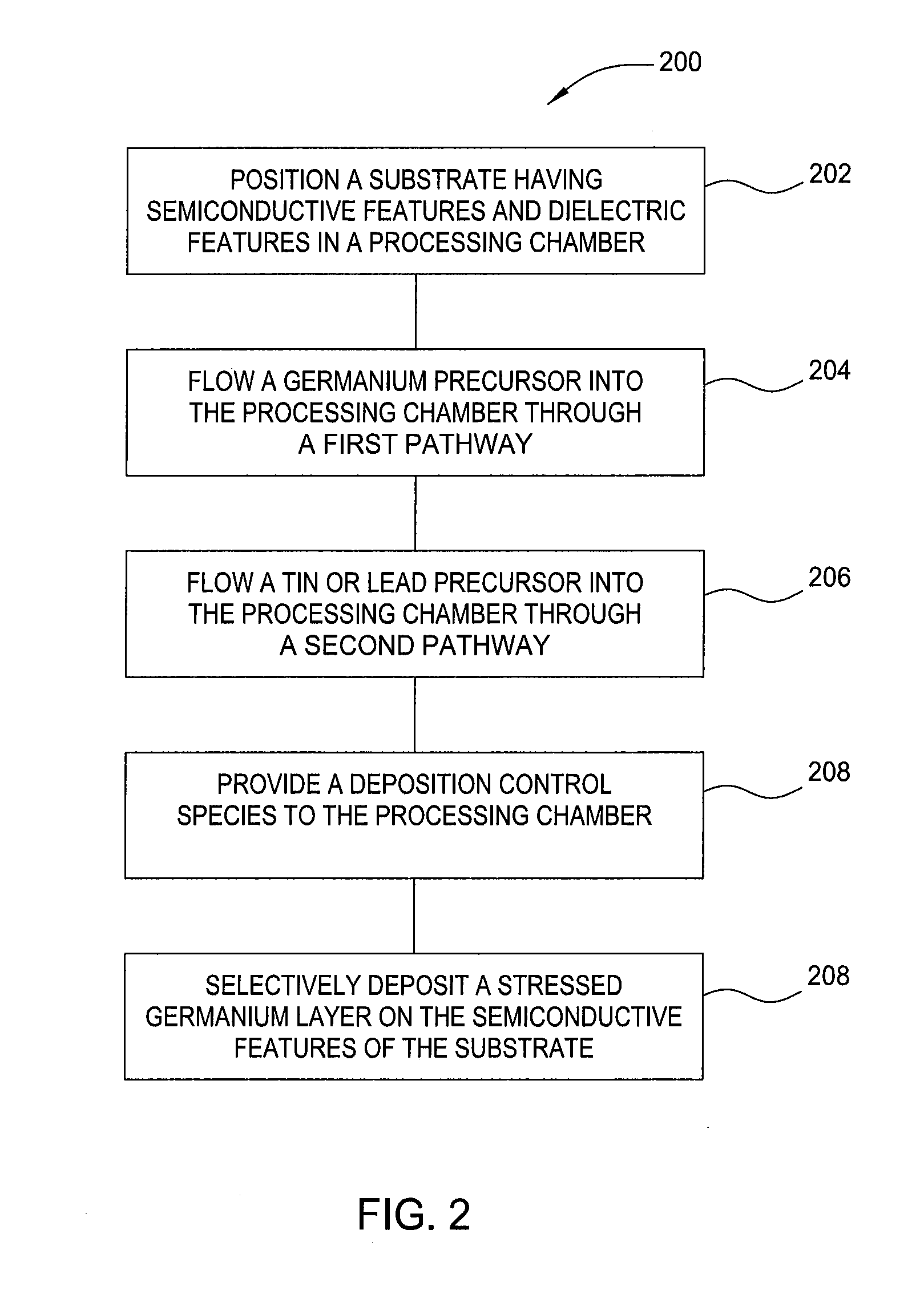Method and apparatus for the selective deposition of epitaxial germanium stressor alloys
a stressor alloy and selective deposition technology, applied in the direction of crystal growth process, polycrystalline material growth, chemically reactive gas growth, etc., can solve the problem of less resistivity, less electronic properties of the channel, and increased threshold voltage, so as to reduce the adhesion of exhaust components
- Summary
- Abstract
- Description
- Claims
- Application Information
AI Technical Summary
Benefits of technology
Problems solved by technology
Method used
Image
Examples
Embodiment Construction
[0013]FIG. 1 is a flow diagram summarizing a method 100 according to one embodiment. A semiconductor substrate is positioned in a processing chamber at 102. The semiconductor substrate may be any semiconductive material on which a stressor layer is to be formed. A silicon substrate on which a transistor structure is to be formed may be used in one example. The semiconductor substrate may have dielectric areas formed on a surface thereof in some embodiments. For example, a silicon substrate may have transistor gate structures and dielectric spacers formed adjacent to semiconductive source / drain regions, which may be regions of doped silicon or regions on which source / drain materials are to be formed. Thus, the source / drain regions may comprise the stressor layers described herein in addition to, or instead of, doped silicon layers.
[0014]The stressor layers described herein typically comprise metal atoms disposed in a germanium matrix, GexMy. Large metal atoms, for example group IV me...
PUM
| Property | Measurement | Unit |
|---|---|---|
| temperature | aaaaa | aaaaa |
| temperature | aaaaa | aaaaa |
| pressure | aaaaa | aaaaa |
Abstract
Description
Claims
Application Information
 Login to View More
Login to View More - R&D
- Intellectual Property
- Life Sciences
- Materials
- Tech Scout
- Unparalleled Data Quality
- Higher Quality Content
- 60% Fewer Hallucinations
Browse by: Latest US Patents, China's latest patents, Technical Efficacy Thesaurus, Application Domain, Technology Topic, Popular Technical Reports.
© 2025 PatSnap. All rights reserved.Legal|Privacy policy|Modern Slavery Act Transparency Statement|Sitemap|About US| Contact US: help@patsnap.com



